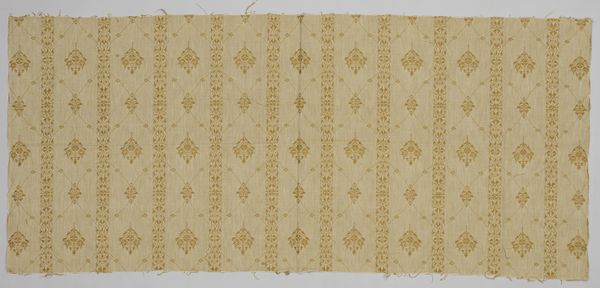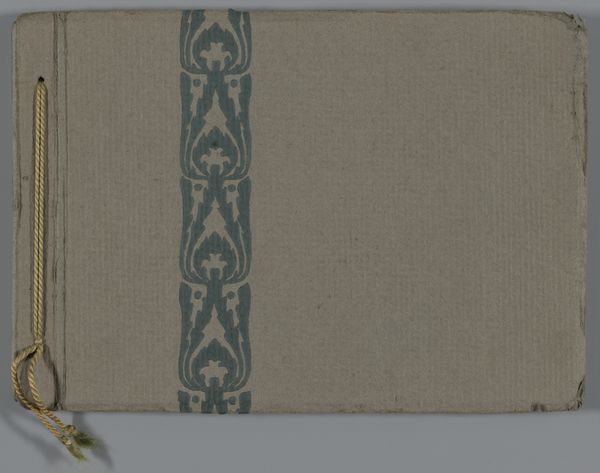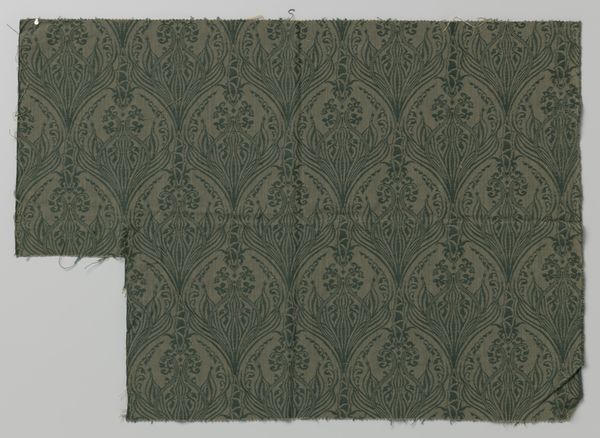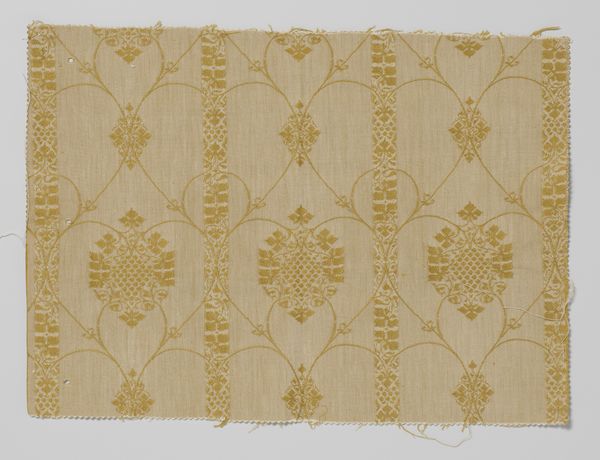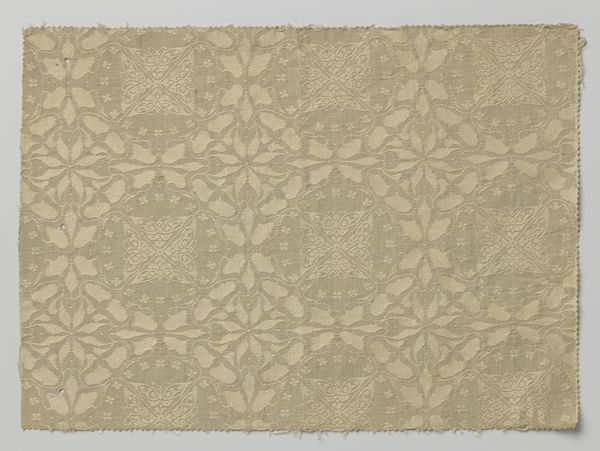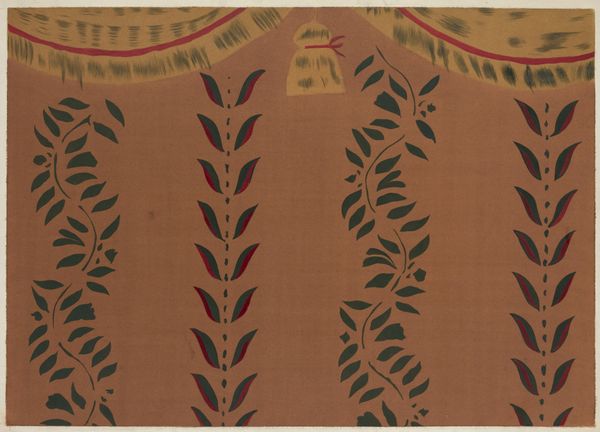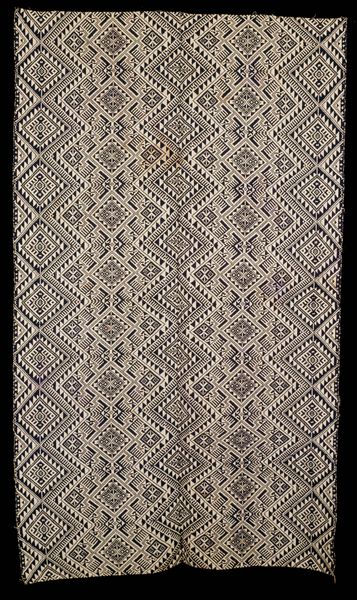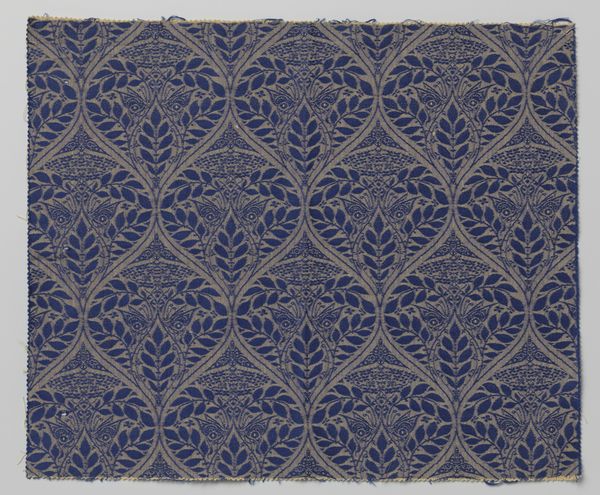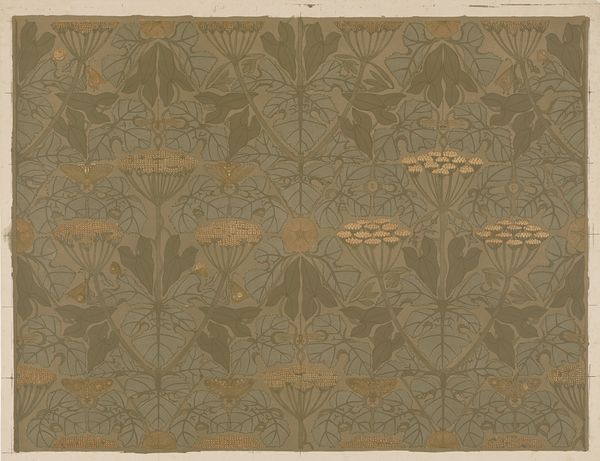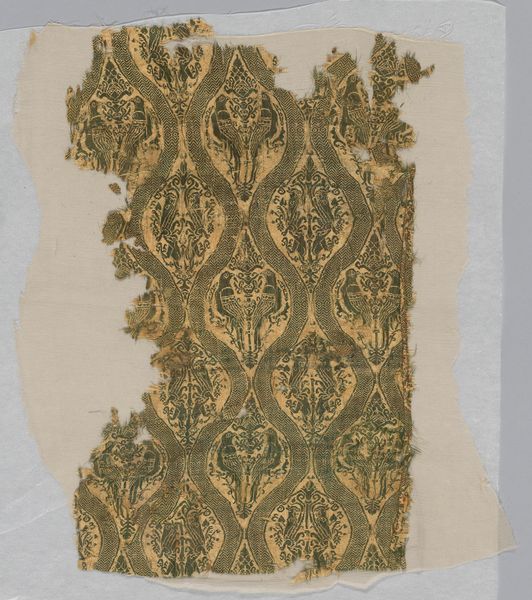
Gordijn met gebatikt patroon van gestileerde peulerwten, bladeren en insecten in spitsovalen before 1911
0:00
0:00
weaving, textile
#
organic
#
art-nouveau
#
pattern
#
weaving
#
textile
#
geometric
#
pattern repetition
#
textile design
#
decorative-art
#
imprinted textile
Dimensions: height 304 cm, width 175.5 cm
Copyright: Rijks Museum: Open Domain
Editor: Here we have "Gordijn met gebatikt patroon van gestileerde peulerwten, bladeren en insecten in spitsovalen" by Theo Nieuwenhuis, likely created before 1911. It's a batik patterned curtain featuring stylized motifs, and it gives off such a handcrafted and serene vibe. I’m curious, how do you interpret this work in the context of its time? Curator: It's impossible to appreciate this work without understanding the context of the Art Nouveau movement. Think of it as a conscious rebellion against industrialization. Artists were turning to nature and handicraft to reclaim authenticity and spiritual connection. Note the recurring motifs: peas, leaves, insects, all abstracted but recognizable. Can you see how this celebrates the organic world in a way that directly counters the cold, repetitive nature of machine production? Editor: Yes, I see what you mean. It's like imbuing everyday life with art, reclaiming beauty and meaning within a domestic sphere. Curator: Exactly! And it's important to consider *who* was expected to live with and appreciate this curtain. These designs were aimed towards an emerging middle class seeking an elevated aesthetic experience, linking design with ethical consumption, rejecting the dehumanization caused by the commodification of the worker under industrial capitalism. How does this artwork challenge our preconceptions about who art is *for*, and what purpose it should serve? Editor: So, it's more than just decoration; it's a statement about values. It makes you wonder how different our world might look if everyday objects were still imbued with this kind of mindful artistry. Curator: Precisely! And it's that conversation—between historical context, artistic intention, and contemporary relevance—that allows us to truly see the curtain for what it is: a piece of history that continues to speak to us today.
Comments
No comments
Be the first to comment and join the conversation on the ultimate creative platform.

